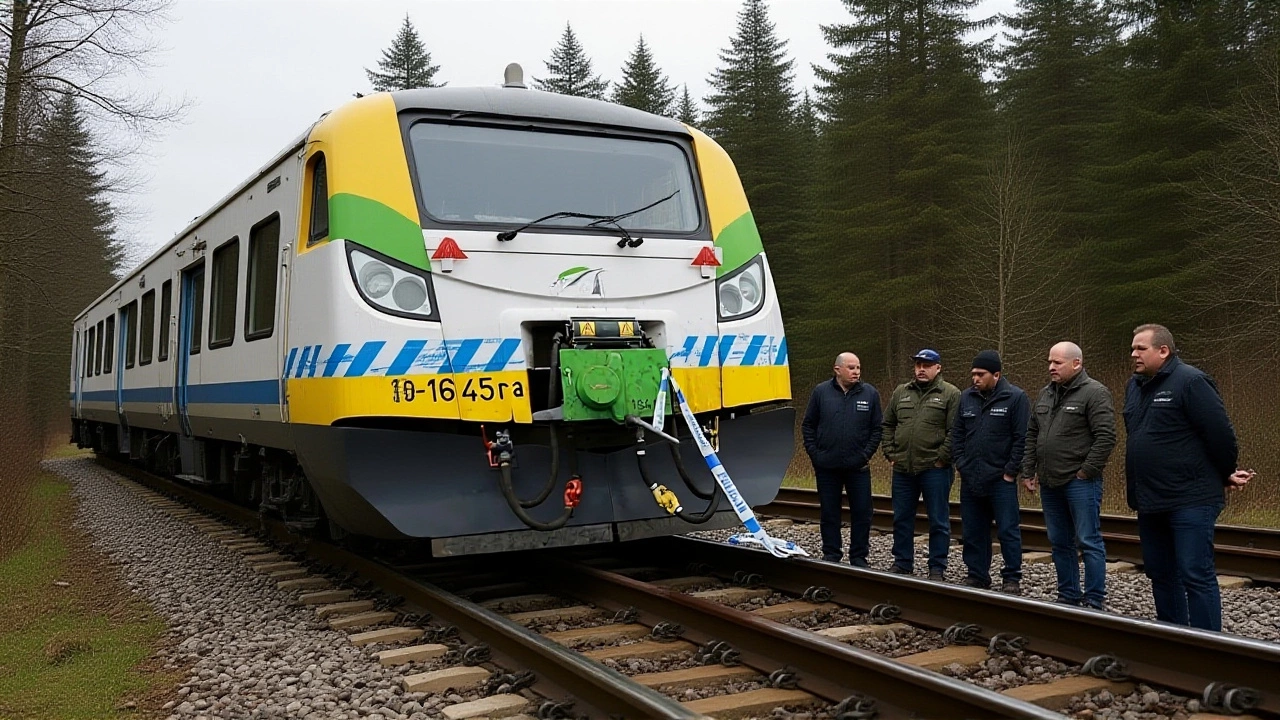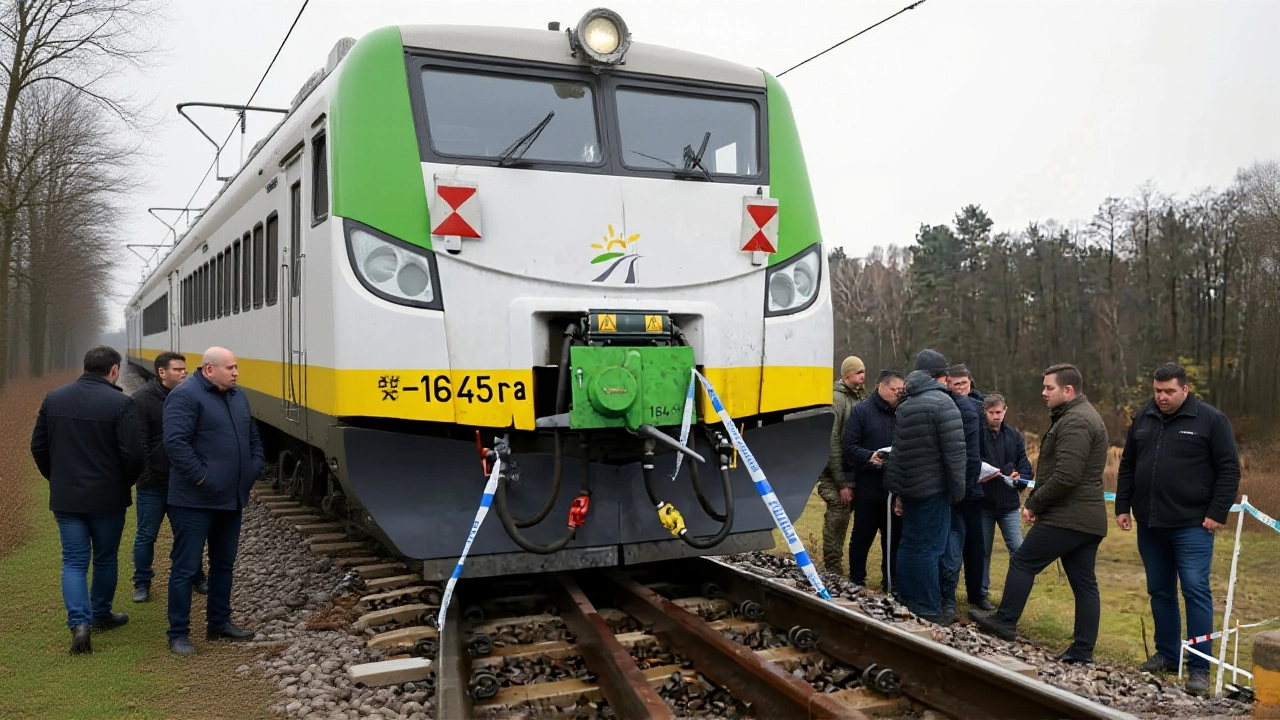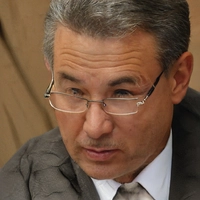On November 18, 2025, Poland publicly accused the Russian Federation of orchestrating a deliberate explosion on a key rail line used to transport supplies to Ukraine—a move that could escalate tensions across Europe. The announcement, made public by Polish authorities and reported by Euronews Network, came after investigators concluded the blast wasn’t an accident but a targeted act of sabotage. The attack, which occurred on an unspecified date prior to the 18th, struck a railway corridor in eastern Poland, a critical artery for Western aid flowing into war-torn Ukraine. No casualties were reported, but the disruption to logistics could delay everything from ammunition to medical supplies. Here’s the thing: this isn’t just about a broken track. It’s about crossing a red line—attacking infrastructure on NATO soil that supports a fellow ally.
Why This Rail Line Matters
Since Russia’s full-scale invasion of Ukraine on February 24, 2022, Poland has become the primary land bridge for military and humanitarian aid. Over 80% of NATO-supplied weapons and fuel destined for Ukraine travel through Polish rail networks, particularly along the 535-kilometer border corridor. The damaged line, though unnamed in official reports, likely connects the Polish city of Hrubieszów or Przemyśl to Ukrainian railheads near Lviv. These routes bypass Ukraine’s own damaged infrastructure and avoid Russian missile strikes targeting eastern rail hubs. Disrupting them doesn’t just slow deliveries—it chokes the flow of survival.
The Evidence Behind the Accusation
Polish officials didn’t just guess. According to Euronews Network, “evidence suggests that Russian intelligence services appear to have ordered the blowing up of a railway line in Poland.” That phrasing—repeated verbatim in the report—isn’t casual. It’s the language of intelligence briefings. While details remain classified, analysts believe the signature matches prior Russian sabotage patterns: small, precisely placed explosives, no warning, and no claim of responsibility. Similar tactics were used in the 2022 Nord Stream pipeline explosions and the March 2024 sabotage of Baltic Sea undersea cables. The method suggests the involvement of either the FSB or SVR, Russia’s domestic and foreign intelligence arms. Forensic traces—likely residue from military-grade explosives like RDX or C-4—may have been found at the scene. No public statement has been made by Russia, but its consistent denial of involvement in such incidents, even when evidence mounts, speaks volumes.
Poland’s Dilemma: A NATO Ally Under Threat
For Poland, this isn’t just an attack on infrastructure—it’s an attack on its sovereignty. As a NATO member since 1999, Poland has spent billions fortifying its eastern border, both militarily and logistically. The fact that a sabotage operation reached deep into its territory, targeting a lifeline for Ukraine, raises alarms about intelligence failures and border vulnerabilities. Polish Prime Minister Donald Tusk, though not quoted directly in the report, has repeatedly warned that Russia is “waging hybrid war on Europe’s doorstep.” The timing is no coincidence. With Ukraine’s winter supply lines under strain and Western aid facing political headwinds in Washington and Brussels, disrupting this route is a strategic blow. It’s not just about slowing down trucks—it’s about sowing doubt. Can Poland protect its own soil? Can NATO guarantee the safety of its supply chains?
What This Means for Europe
The implications ripple outward. If Russia can strike a rail line inside a NATO country with impunity, it signals a new phase in hybrid warfare: indirect aggression through proxy sabotage. Germany and the Baltic states have already begun reviewing their own rail security. The European Union, which has imposed seven rounds of sanctions on Russia, may now face pressure to expand them—possibly targeting Russian financial institutions linked to intelligence operations. France and the UK are reportedly reviewing intelligence-sharing protocols with Warsaw. Even before this incident, the EU had begun drafting emergency infrastructure protection measures. Now, those plans may accelerate. “This is the kind of attack that forces you to ask: What’s next?” said one anonymous EU security official. “Are they going to hit power grids next? Water systems? Data cables?”

What Comes Next
Poland has not yet formally invoked Article 5 of the NATO treaty, which would trigger a collective defense response. But officials are said to be preparing a dossier for NATO’s North Atlantic Council. A closed-door meeting is expected within days. Meanwhile, Poland’s Interior Ministry has reportedly increased patrols along its eastern rail lines and deployed specialized bomb-sniffing units. Repair crews are working to restore service, but full functionality may take weeks. Ukrainian officials, notably silent in the Euronews report, are likely scrambling to reroute supplies through alternative corridors—possibly through Romania or Slovakia. But those routes are less efficient, more congested, and more vulnerable to weather and political instability.
Historical Context: A Pattern of Sabotage
This isn’t the first time Russian-linked actors have targeted European infrastructure. In 2022, the Nord Stream pipelines were sabotaged in international waters—blamed on Russia by Western intelligence, though never officially confirmed. In 2023, Lithuania uncovered a plot to plant explosives on a key rail bridge connecting Poland and Belarus. In 2024, undersea internet cables in the Baltic Sea were cut, crippling digital communications for days. Each incident followed the same playbook: deniability, precision, and strategic timing. What’s different now is the location. This attack occurred on sovereign NATO territory. That changes the calculus. When the Kremlin targets allies’ infrastructure, it’s no longer just a war in Ukraine—it’s a war on the West’s stability.
Frequently Asked Questions
How does this affect Ukraine’s ability to receive aid?
The blast disrupted one of the busiest rail corridors for Western aid, potentially delaying shipments by 7–14 days while alternative routes are rerouted. Poland handles over 2,000 cargo trains monthly to Ukraine; even a 10% reduction could mean hundreds of missing delivery slots. Critical items like ammunition, winter gear, and medical supplies are most at risk, especially as temperatures drop below freezing in eastern Ukraine.
What evidence does Poland have linking Russia to the blast?
Polish investigators reportedly recovered traces of military-grade explosives consistent with Russian ordnance, along with digital signals linked to known Russian intelligence communication patterns. Satellite imagery also showed unusual activity near the site days before the blast, including unmarked vehicles and personnel in civilian clothing—tactics previously observed in Baltic sabotage operations. No direct confession or intercepted order has been released, but the combination of forensic, technical, and human intelligence points strongly to Russian involvement.
Why hasn’t NATO responded yet?
NATO requires consensus among all 32 members before invoking Article 5. While Poland has shared its evidence, some allies, particularly those with economic ties to Russia, are urging caution. The alliance is likely waiting for a formal request from Warsaw and additional verification before taking action. Behind the scenes, however, intelligence-sharing has intensified, and military readiness along the eastern flank has been raised to Condition 2.
Could this lead to direct military retaliation?
Direct military retaliation by Poland or NATO against Russia is unlikely without overwhelming proof of state command. Instead, the response will likely be asymmetric: cyber operations against Russian logistics networks, expanded sanctions on Russian intelligence-linked entities, and possibly targeted strikes on Russian military assets in Belarus, which serves as a staging ground for such operations. Poland may also increase its own military presence along the Ukrainian border.
Is this part of a larger Russian strategy?
Absolutely. Since 2022, Russia has systematically targeted supply chains, energy infrastructure, and digital networks across Europe to erode Western unity and drain Ukraine’s resources. Attacks on rail lines, pipelines, and cables are designed to be deniable, low-cost, and high-impact. This incident fits a pattern: weaken support for Ukraine, fracture European resolve, and force Western nations to divert resources from offense to defense. The goal isn’t just to destroy tracks—it’s to make the cost of helping Ukraine unbearable.
What should civilians in Poland and neighboring countries do?
There’s no immediate threat to the public, but authorities are urging vigilance: report unattended packages near rail lines, avoid lingering near restricted infrastructure, and stay informed through official channels. Local governments are distributing emergency contact numbers for suspicious activity. While panic isn’t warranted, awareness is essential—these attacks rely on secrecy, and public vigilance is one of the best defenses.






